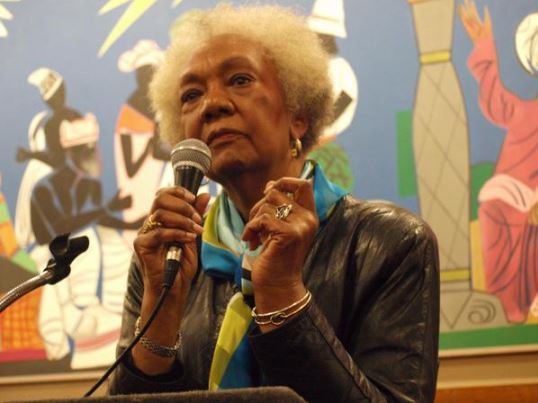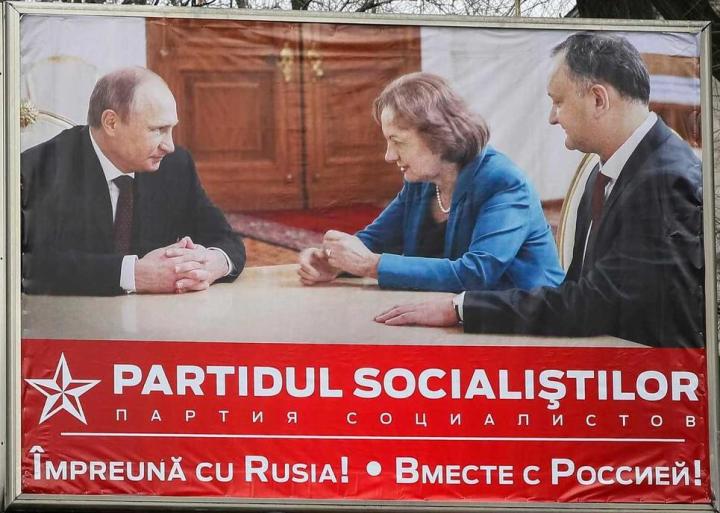Transmodernity is Burning:
A Schizoanalysis of Transracialism and Transgenderism in Paris is Burning
* * *
By Daniel K. Buntovnik, 13 February 2017
What is transraciality, and who is transrace? The Rachel Doležal affair invites the question

There is debate about the meaning of the term “transrace”. The prominence of discourse around the term “transrace” was elevated in the mid 2010s in the wake of the sensationalized story of Rachel Doležal, a woman who is said to have a verified genealogical tree which traces back to the peoples of Northern and Central Europe (but who is also said to have family members [in-law] of Sub-Saharan African descent), in addition to having deceived people in the Pacific Northwestern region of the United States of America into believing that she was a Black person with a pale complexion, acting as an NAACP leader whilst assuming this identity. She apparently did this by dyeing her hair darker and perming it, using artificial skin pigmentation-modifying (‘fake tan’) products, and perhaps affecting her speech with Ebonics elements. In the wake of the scandal over Doležal’s apparent deception, some individuals added to the discourse by denouncing the use of the term “transrace” to describe individuals like Doležal; they claimed instead that “transrace” should only be used to describe individuals who are raised by adoptive parents of a racial grouping deemed “other” to that of their biological ancestors. (See here, for example). While I do not wish to dwell excessively on this debate over the one “true” definition of the term “transrace”, I felt it was important to start out by acknowledging it before we delve into the topic of transracialism. And yet, another possible definition has been disconsidered: that the adjective “transrace” may fittingly be used to describe individuals who exist in a multigenerational process of racial transitioning.
Franz Fanon describes this multigenerational transracialism in Black Skins, White Masks (1952):
Shame. Shame and self-contempt. Nausea. When people like me, they tell me it is in spite of my color. When they dislike me, they point out that it is not because of my color. Either way, I am locked into the infernal circle. I turn away from these inspectors of the Ark before the Flood and I attach myself to my brothers, Negroes like myself. To my horror, they too reject me. They are almost white. And besides they are about to marry white women. They will have children faintly tinged with brown. Who knows, perhaps little by little. . . .
Following the intergenerational/transgenerational distinction developed by theorists in the field of psychogenealogy such as Anne Ancelin Schützenberger, we might call the form of transracialism evoked by Fanon intergenerational, because the racial transition occurs as the result of a conscious effort made by the ancestor on behalf of the descendant, so that the latter may be accepted into a racial category to which the former did not belong, while we might call a multigenerational transracialism transgenerational when it occurs unconsciously, without the individuals involved becoming aware of the process, perhaps due to unconscious absorption of white supremacist cultural values.
Due to white supremacy, the racial transitioning process in America has usually gone in the opposite direction to that observed in the case of Rachel Doležal. That is to say that white supremacy encouraged individuals of the Sub-Saharan African diaspora in the United States of America to long for whiteness, a racial ideal which was construed as an unstigmatized personal state for the individual. American literary works such as Sinclair Lewis’s Kingsblood Royal (1947) and Fannie Hurst’s Imitation of Life (1933) have immortalized these tales of “tragic mulattos” and “tragic quintroons” like Peola and Neil Kingsblood, protagonists of the aforementioned works for whom being racially “outed” spells personal catastrophe. The upwardly mobile individual is also always white-wardly mobile in a global economy constructed around the fiscal elevation of those racialized as “white”. Perhaps this is why many found the acts which Rachel Doležal performed to be somehow troubling. She achieved upward mobility, gaining a certain social prestige in becoming an NAACP leader, by adopting the mannerisms and the get-up (which we might well qualify as “drag”) that she needed in order to perform an historically stigmatized racial identity.
Drag as transgressive, transcendant tool for moving beyond limitations imposed upon one’s gender, race, sexual orientation
“Drag” typically evokes the practice of male “queens” dressing up and behaving as if they were women. This is, however, a limited understanding. In Jennie Livingston’s 1990 documentary Paris is Burning, we see that the drag shows performed at late 20th century balls in New York City consisted not only in the male adoption of feminine clothing and mannerisms (i.e. the gender-bending “drag queens” of stereotypical lore), but that these performances also operated across the racial plane of social difference. And the expanded possibilities of drag which the film depicts do not end there; race and gender are not the only modalities upon which drag operates. As other critics have pointed out, the film “extends this argument [that drag is a practice that can potentially draw attention to the imitative nature of gender itself through its parodic repetition of gender norms] to include the constructed nature of race and class identity as well as gender identity” [See: Lauren Levitt, “Reality Realness: Paris is Burning and RuPaul’s Drag Race” in Interventions Journal (7 November 2013)].
In a segment of the film devoted to the exposition of this class and race-nonconforming form of drag, we see individuals historically stigmatized as Black “homosexuals” perform power drag by symbolically taking on the roles of members of the U.S. military and “successful” (ruling class) white American individuals. Not only do the drag shows include Afro-diasporic subjects dramatically imitating (and thereby critiquing) European thought and behavior, but they also feature gays donning hetero-drag to perform straight individuality, offering thus their critiques of other stigmatized individuals occupying contextually determined contradictory positionalities vis-à-vis oppression, such as heterosexual street thugs “of color”, at their dance battling balls. Therefore, in addition to race, class, and gender, we can also add sexually orientative identities to the constructed modalities upon which drag operates. Closeted gays can be said to be performing this kind of drag in almost every moment of their lives. Indeed, gender and sexuality researcher Lauren Levitt relates that, insofar as most everybody wants or expects to be accepted as a “real” iteration of a gender or ethnicity, “many writers” have made the case that “everyone essentially is in drag” [ibid].



The objective of the drag performance is to exude a kind of authenticity the drag ball community dubbed “realness”, which gender and sexuality researcher Lauren Levitt defines as “the extent to which a performance conforms to the standard by which it is being judged”. When individuals strive for realness in the assumption of new racial identities, it is called racial “passing”.
This broader sense of the possibilities of drag which the film conveys leads us to the realization that Rachel Doležal does indeed engage in a form of drag. A great deal of the controversy surrounding Doležal arises then from those skeptical of her realness, or lack thereof. It has to be admitted though that Doležal did have a fair degree of success in being able to “pass” as Black, her position in the NAACP leadership seeming to add to her realness.
How well does Doležal conform to the abstracted, “standard”-ized notion of “a person of color”? How valid is it to hold individuals up to such standards?

Contesting ruling class recuperations
For what reason have the drag performances depicted in Paris is Burning been valorized by certain hegemonic forces within 21st century American society? It should be considered whether the decision taken in late 2016 by the U.S. government’s Library of Congress to “preserve and honor” the film, while appreciable, nevertheless signals a further step towards the recuperation of the revolutionary race and sex politics the film portrays (for example, in the Marxian, abolitionist attitude it conveys through its emphasis on the liberatory sociality of the drag ball “houses” as an alternative to the coercive sociality of the patriarchal, bourgeois standard of “the family”). This recuperation is mirrored in analogue developments such as the white engineering of African-American-led imperialism at the critical moment of burgeoning unrest at the tailend of the deeply unpopular, bank-bailing regime of George W. Bush, when the U.S. government donned transracial drag, using blackface to preserve its historical white power, as well as the sanctioning of gay-tolerant militarism achieved in 2011 via the repeal of the homophobic “Don’t Ask, Don’t Tell” policy.
Thus while the generalized upward mobility of Modern Family-esque 21st century homosexual male individuality within U.S. society via developments such as the legalization of gay marriage, based on and enabled in large part by events orchestrated by groups such as the Gay Liberation Movement and other trailblazing radical LGBTQIA+ activists required cultural subversiveness–such as the identification with “Third World” Marxists (e.g. the Gay Liberation Front’s nomenclatural identification with the National Liberation Front, which at that time was engaged in bloody armed conflict with U.S. military forces in Vietnam), the recuperation and assimilation of the traces of this subversiveness by the same forces originally targeted for subversion by subalterns signals a hegemonic counteroffensive.
But a DOLEŽAL archetype poses startling questions for the social movements in general; what do we make of white, or “formerly white”, individuals finding 21st century socio-economic success–however extravagant or modest that “success” may be–in the appropriation of Transatlantic Afro-diasporic Black identity, in the dissimulation of WASP assimilation? And while Doležal made headway in becoming a civil rights activist, does her brand of transracialism not open up the way for presumably less well-intentioned, Justin Bieber-type appropriators who would inevitably adopt this Transatlantic Afro-diasporic Black identity, to monopolize culture-linked profit ventures opened up by the development of black and gay markets and sections of the bourgeoisie? (This trend could be–indeed, has been–analyzed with elder cultural icons, such as Elvis Presley, although many efforts have been made to highlight the fact that Elvis was a Romanichal, and thus “not white”.)
While transgenderism has existed in a variety of cultures, and for a long time, it has become one of the more contentious matters which divides the contemporary gay activist community itself, most noticeable nowadays perhaps when we cleave the latter at its intersection with the so-called “TERF” (or “Trans-Exclusive Radical Feminist”, a term which some argue constitutes a slur) community, comprising individuals who may or may not be of Lesbian persuasion. Let us return to the matter of so-called “TERFeminism” later on. For now, we can take notice of the fact that the gay community taking part in the balls of fin du 20ième siècle New York City was also not united in its understanding of what it meant, at that time, to be a drag queen.
The phrase “the gay community” has, by 2017, come to sound somewhat old-fashioned. During the years of the mid to late 2000s, high school Diversity Clubs and Gay-Straight Alliances, tended towards use of the acronym GLBT for “Gay, Lesbian, Bisexual, and Transgender”, while in the 2010s the acronym LGBT has come to predominate over the former. We may suspect that this is a feminist victory because “gay” tends towards connotations of male homosexuality, and thus “gay movement” and “gay community” imply patriarchal forms, GLBT implying a gay-headed Lesbian movement. Meanwhile, the positionality of the letter T, at the end of the LGBT and GLBT acronyms shows its subordination, suggesting de-valuation of the transgender or “transsexual” community, which has long been known in part for its drag queens. Based on facts discernible in the film Paris is Burning (1990), many of the drag queens of ’80s NYC identified themselves as men who performed womanhood, and not as trans-women. An example of this is Pepper LaBeija, whose remarks in the film include: “Women get treated badly. You know, they get beat, they get robbed, they get dogged, so having the vagina, that doesn’t mean that you are going to have a fabulous life. It might in fact be worse.”
After watching Paris is Burning, my interest in learning more about the history of the U.S. gay community spiked as I recalled much of the hubbub which 21st century gay rights activism front groups for Marxist political organizations claim was roused out of the masses from the mere mention of the Stonewall Uprising, when homosexual members of the New York working classes were decisively victorious in staging a sort of insurrection due to social conflict between them, exploitative organized crime groups, and the harassive police forces. So it was around the same time that I viewed Paris is Burning that I watched another documentary film, also hosted by Youtube, that I had found about the Stonewall Uprising which occurred after an unlicensed, Mafia-rackateered gay bar called the Stonewall Inn was raided by oppressive, homophobic police. After that documentary was feasted upon by my eyes and ears, I saw a short video about five, or possibly ten, American gay riots which occurred before Stonewall, as far back as 1959, in California. From these sources, I gathered that the “gay bar” culture had really begun to spread during the 1960s. It occurred to me that, in a way, the gay bars replaced the speakeasies of the 1930s, being illegal drinking establishments which were sometimes owned by the mob. But there do exist those aficionados of the “gay bar” scene who may eschew the “homosexual lifestyle” itself, if we consider patterns of sexual relations between organisms constitutive of a lifestyle. One may also wonder about the sexuality of Italian mobsters who visited the Stonewall gay bar, if only to collect their dues. But I do question the value and legitimacy of the discourse of those individuals who advocate supporting the identity label “Queer” as a meeting point between the LGBT community and the LGBT community’s “weird” friends and then in retrospect perhaps do support the value and legitimacy of this notion, because I believe that one can, and indeed many do, frequent gay bars without necessarily having a true sentimental connaissance of homosexual desire, and therefore be identified, by some in the society in which that individual lives, as “straight”, but not the kind of “straight” that’s chill with gay bars–therefore becoming “Queer” in a way, due to proximity in the social movements historically associated with “homosexuality”, “bisexuality”, and “transsexuality”.
Trans- affinities
It had come to my attention that some of the drag queens in the film Paris is Burning were white-passing, due to the fact that in the comments section of Youtube, where Paris is Burning is hosted and available for viewing, a comment left by some forlorn internaut could be found identifying Dorian Corey, a drag queen, by the epitaph “the white drag queen”.

Thereafter, another commenter chimed in, chiding the writer of the previous comment and asserting that Dorian Corey was African-American or Black. I’m not sure which ethnonym that commenter asserted to be applicable to Corey; perhaps they did not even identify one ethnonym or the other, but simply stated that Dorian Corey was, in fact, “not white”.
In the case of these individuals such as Dorian Corey and other lighter skinned, blue eyed “Negros” called (e.g. Walter Francis) White, it is thought that they are Black because of the One Drop Rule, which states that though they may in actuality be mainly European of ancestral extraction, they are in actuality BLACK due to the “predominance” of black blood over white blood. Frances Cress Welsing took this a step further, establishing the notion of whiteness as a genetically recessive phenomenon in her groundbreaking Cress Theory of Color-Confrontation, formalizing the pseudoscientific One Drop Rule from the standpoint of Critical Race Theory.

Above: The original Walter White, a prominent African-American leader in the same organization as Rachel Doležal, before his name was culturally misappropriated by the father-figure actor from the American sitcom “Malcolm in the Middle” in an early 21st century prestige television program about methamphetamine.
Frances Cress Welsing was a successful psychoanalyst who, alongside other luminaries who brought forth the discourse of Afrocentricity during the 1970s and 1980s, mastered the craft of psychoanalytic, and some would argue, “pseudoscientific” racial theorizing.

Though aspects of Cress Welsing’s multi-decade oeuvre could possibly be subjected to a number of sound criticisms, more deserving of recognition and attention here is one of her final nuggets of wisdom. I refer here to her astounding analytic insight into the twisted psyche of Dylan Storm Roof, the White Southerner currently on death row for having perpetrated on June 17, 2015 the massacre at the Emanuel African Methodist Episcopal Church in Charleston, South Carolina, in which he ended the lives of nine innocent individuals for no reason other than his white power delusion (though we must be careful not to excuse or downgrade the responsibility/despicability of white power political extremist thinking and organizing with psychopathological terminology such as “delusion”). Shortly before her death on January 2, 2016, Cress Welsing illustrated clearly with her elegant, prosaic speech that Dylan Storm Roof had a racialized sexual fetish, perhaps based in a violence-prone complex of racialized sexual inferiority, which was expressed with the symbolic re-presentation of his phallus as a large black pistol, playing up the racial stereotypes.

Above: In this photo we see the soon-to-be lethally injected Storm Roof placing a firearm in an arguably sexually suggestive location in relation to his body, dangling it between his legs, and surrounding himself with potted flowers. Sigmund Freud advises that we should not forget that flowers are in fact the genitals of plants. Notice how the black pistol forms a graphic connection between the reproductive organs of the non-human life forms and those of Storm Roof. This racialized sexual transference–the replacement of the white penis with the black phallic object–stands as further evidence of the intersectionality of transgenderism and transracialism. Although Storm Roof’s phallic substitution does not constitute transgenderism (the pistol being a male gendered, penile object), it is transsexually transracial.
The attentive viewer of Paris is Burning will observe the interesectionality of transracialism and transgenderism, which is particularly striking in personages such as Dorian Corey (though not only). The film evidences a certain affinity between the phenomenon of gender-transitioning and that of “Negro” to “white-passing” (to “white”) transgenerational transracialism–a historical process occurring among many individuals who also happened to share an interest in transitioning themselves from being “men” into being “women”, whether permanently in day-to-day life or temporarily in the ritualized context of the balls.
The academic who prefers not to capitalize the first letters of her pen name, bell hooks, identifies the project of the drag queens depicted in Paris is Burning as simultaneously transgenderist and transracialist in “Is Paris Burning?”, a chapter in her 1996 book Reel to Real: Race Sex, and Class at the Movies:
Within the world of the black gay drag ball culture she [Livingston] depicts, the idea of womanness and femininity is totally personified by whiteness. What viewers witness is not black men longing to impersonate or even to become like “real” black women but their obsession with an idealized fetishized vision of femininity that is white. Called out in the film by Dorian Carey [sic], who names it by saying no black drag queen of his day wanted to be Lena Horne, he makes it clear that the femininity most sought after, most adored, was that perceived to be the exclusive property of white womanhood.
But let us consider why, on the most basic level, this affinity exists.
As evidenced by their common prefix, it can be remarked that transgender and transracial peoples are fundamentally alike for one essential reason: they are in transition. One transitions from a gender; the other, from a race. Like drag performers, they also commit what is viewed as transgression by transcending the limitations socially imposed on their assigned identity.
There are some significant differences between the phenomena of gender and race transitioning. One is that the gender transition takes place within the course of a lifetime, affecting primarily the individual, while the racial transition described here is transgenerational, affecting collectivities such as clans and family units, as in the fictional examples of Peola or Neil Kingsblood.
Transgenerational transracialism is the story of coercive assimilation to white supremacist society, which explains why more members of the Afro-diasporic population in the U.S. now identify, or perhaps are identified by others, as “white” than as “black”. That is to say that, despite both the One Drop Rule and Cress Welsing’s notion of white genetic recessivity, so-called “interracial” sexual-reproductive relations (or “miscegenation”) have in fact caused more individuals among the U.S. population which is of varying degrees of mixed European and African ancestry to be identified as “white” (or “passing”?) than as Black. This is made possible by the white supremacist drive of bourgeois anti-culture, which also introduces “colorism” into the heart of the Black community. It seems more of a question of cultural assimilation than a would-be problem of “genetic drift”; the hegemonic white patrons of Western colonialism seemed to catch on symbolically, with many more Littles and Clays than Xs and Alis coming to predominate over the Afro-diasporic populace. However, this white supremacist push to transgenerationally assimilate “minorities” cannot be resolved with a superficial change in the way of thinking about racial identity, such as by merely instructing these white-passing, distantly Afro-diasporic masses to accept themselves as “genuinely” Black due to their existence being the direct result of the Transatlantic Slave Trade. That’s why it is also important to render cultural practices such as aesthetic skin bleaching taboo, and to diminish sentiments of racial fetishization of whiteness as a desired sex characteristic by giving due value and implementation to notions such as black pride and beautifulness. Only then will the current historically-based form of Transatlantic Racialized Slave and Master Social Classes discrimination be overcome. The hard cores (aka nucleos duros or asilis) of each national, or ethno-cultural, archetype will survive for some time in a mosaic fashion within the united global world economy, even as this develops into an environment of total cultural egalitarianism. What “white people” have to understand is that whiteness is not so much an ethno-cultural expression, but a tool of capitalist coercion which censors such expressions.
Some leftist writers implicitly suggest that Karl Marx himself was “transrace”. In “On the Social Ontology of ‘Race’ — Was Karl Marx White? And Is He?” Steve Darcy at The Public Autonomy Project essentially argues that, given 19th century Europe’s racial othering of Ashkenazic Jewry, Marx was perceived as racially “Other” in his day, but given the near-consensus among 21st century individuals that Ashkenazic Jewry is encapsulated by “whiteness”, Marx has therefore become a transracial subject, having been non-white during his own lifetime while nevertheless being now (rightly?) considered a “dead white male”. I would, however, contest the notion that Marx’s epitaph should read “dead white male”, any more than Dorian Corey’s ought to, because if we accept the previous half of this argument (i.e., that Marx was perceived as racially “other” during the 19th century, considered as something analogous to what might today be called “a person of color”), then he should still be understood, as a historical personage, with that fact in mind. The matter is further complicated by the fact that Karl Marx was perhaps of African descent, his family having called him by the nickname “the Moor” due to “his dark complexion”.

Darcy’s consideration of Karl Marx as transrace is analogous to the way in which drag queens such as Dorian Corey may be perceived by ignorant early 21st century viewers of Paris is Burning as belonging to another “race” than the one with which they were identified by populaces of late 20th century New York (or by more knowledgeable individuals of our time who are aware of the historico-cultural context in which the film’s personages lived). In this perspective, it is clear that transracialism exhibits a high degree of contingency upon historico-contextualization. Ironically, the Youtube commenter who thought Dorian Corey was a white person, seemed to somehow discount the very point Corey tries to make in the film about the other drag queens identifying more with the white Marilyn Monroe than the black Lena Horne. Corey seemed to view the transracial aspect of the drag queens’ aspiration as pathological. Corey informs us that, “In a ballroom you can be anything you want”, but signals disdainfulness for the fact that most wanted to be white. This white supremacist drive has other bizarre manifestations, such as a whole sub-genre of hypnotic videos, also available on Youtube, featuring low-frequency and binaural sounds to help individuals “get pale white skin” (trigger warning: deeply unsettling).
Let’s return now briefly to the previously mentioned issue of the divide which exists among and/or between the members and supporters of LGBTQIA+ communities and a certain type of women’s movement activist labelled, usually by critics of this line, as the “trans-exclusive radical feminist”.
An interesting selection of facts begins to emerge when we cross-analyze LGBTQIA+ discourses and so-called “TERF” discourses, along with those of another group often allied with the latter, the “SWERF” (or, “Sex Workers Exclusive Radical Feminists”, another term which those to whom it is applied often deride as a stigmatic exonym, similar perhaps to calling advocates of reproductive rights “anti-life” instead of “pro-choice”). It appears that while transphobia can and does exist among homophiles, it is less likely, although not impossible, for homophobia to exist among transphiles. It is, on the other hand, still quite possible that misogyny exists among transphilic homophiles. We get this sense of homophilic transphobia a bit in Paris is Burning, when some of the gay drag queens vehemently dispute the notion that they would become “girls” or “women”. In this light, the ’80s NYC gay community involved in the ball and voguing scene might be seen as sexually fueling the capitalist sex trafficking trade, because these transgender and gay male drag queens served to increase the liberation of individuals from the sex economic repression of the moral mainstream of society, which in turn liberalized and enhanced the sexual marketplace, the figure of the trans-woman scarcely separable from the trans-woman-philic straight male sex commodifier, whom members of the heteronormative society deride as homosexual, not accepting the trans-woman as a “real” woman, whom the “TER” feminists chastise for re-inforcing gender roles as opposed to transcending them.
The TERF and SWERF critique of “transgender-ism” thus replicates the critique of certain social justice advocates against Rachel Doležal’s brand of “transracialism”; if the goal is to abolish gender, then the goal is surely to abolish race as well. This proposes a bit of a problem however because we could anticipate that different tensions might arise from the proposal to mold all of the world’s peoples into some pan-human descendent kin. If we take the Noel Ignatievian notion of “racial abolitionism” at face value, that we must “abolish the white race”, there is a real tension between, on the one hand, the idea that this racial abolitionism is largely metaphorical, and that by superficially changing our ways of thinking and behaving, we remove our socially constructed racial identifications although the pan-human descendants will continue to display a range of physiognomies relatively similar to that which exists now, and on the other hand, the idea that privileged sections of “First World” populaces will need to be deported en masse to more egalitarian environments in the so-called “Global South”, where the formerly privileged are likely to perceive egalitarianism as social subordination until the consciousness of their descendants has been altered to fully accept the abolition of white supremacy. If we accept the One-Drop Rule-esque Color-Confrontation Theory of Frances Cress Welsing, then we must admit that the transition of humanity’s descendants to a pan-human kinship will preserve human blackness while eradicating whiteness. The premise of this proposition (that the abolition of racism, combined with white genetic recessivity, results in the abolition of an oppressive social construct disguised as an ethno-cultural group known as “white people” but not in the abolition of “black people”) should perhaps be reconsidered, because it forms the entire basis of anti-miscegenationist hysteria and the neo-Nazi ethos.
The “Homosexuality” of White Supremacist Thought and Behavior
A bitter irony of the white supremacist (also known as “America First-ist”) and/or neo-Nazi worldview is that Nazism, or white racism in general, is actually fundamentally premised on Homosexuality. I know this is a startling claim, but I will explain why this is so in the text which follows.
Nazism creates the sexual fetish of race, proclaiming the Aryan-on-Aryan action needed to create a HOMO-genous racial community, a volk based on the HOMO-sexual love which one Aryan man feels for one Aryan woman, and vice versa. Now that we have established Nazism as a sort of homosexual ideology, we can also observe that it nevertheless incorporates heterosexuality on the gender plane of desire. This contradiction is possible because semi-autonomous planes of sexual desire rely on many basic features of the human body and identity which can be exploited for the Twoness principle: masculinity, femininity, blackness, whiteness. The only difference between the gender and racial planes of sexual desire though is that, gender being historically and culturally linked to sex (and until the emergence of gender theory, essentially synonymous), gender preference in sexual orientation cannot be rightly considered a “fetish”, while sexual orientations axed around preferences with regard to the race or ethnicity of potential sexual partners are fetishistic, because ethnicity is not an intrinsically sexual feature, or at least not linked to sex in the same way as gender. Nevertheless, the reproduction of racial identity groupings (e.g. “white people”) relies on sexual reproduction, so the anti-miscegenationist, the white supremacist, nationalist, neo-Nazi, or “alt rightist” sexualizes white skin and other physical features associated with pseudoscientific “white” racial identity, turning these features into sex characteristics. The emergence of the term “cuckservative” or “cuck” as a neo-Nazi or alt-right insult for rival white nationalists (or rather, conservative U.S. nationalists/American patriots who just so happen to be white, such as Jeb Bush, for example) who do not embrace anti-miscegenationism, which “[alludes] to a genre of porn in which passive white husbands watch their wives have sex with black men” also demonstrates the sexually fetishistic nature of this ideology’s fixations.
Culturally, an important divide within the right-wing white people community exists between advocates of Christian identity, who believe that “white people” are “a lost tribe of Israel”, and those such as Augustus Sol Invictus, Varg Vikernes, etc. who reject “Judaeo-Christianity”, embracing instead efforts to construct a new Eurocentric pseudo-spirituality by appropriating aspects of the pagan mythologies of pre-Christian Europe, sometimes combined with Satanism–(there are also those such as Michael Aquino and Richard Spencer who do the same thing but, in an even more blatantly culturally misappropriative manner, construct their Eurocentric pseudo-spiritualities around African, namely Kemetic, mythology [See: “Temple of Set” and “Cult of Kek”]). This can be quite revealing about the racially fetishistic homosexual nature of white supremacists, because the ancient peoples of the arbitrarily delineated landmass known today as “Europe” were known for valorizing homosexual relations. In Plato’s Symposium (circa 380 BC), the Ancient Greek man Pausanias, known for being the lover of the male poet Agathon, distinguishes between two forms of love.
Pausanias maintained that there exist:
- (1) Common Love, or Popular Love, which occurs between a man and a woman, and
- (2) Celestial Love, which is homosexual and exclusively male.
In Ancient Greek culture, the hegemonic belief was that men were superior to women, and therefore the homosexual love between two superior, male beings was superior to, and spiritually more powerful than heterosexual love, occurring between a superior and an inferior being (i.e. a man and a woman). Nazism inherits this same paradigm, sublimating only one minor aspect of it (transferring the operation from the gender plane of sexual attraction to the racial plane of sexual fetishism), in considering racially homosexual unions of white couples superior to the racially heterosexual unions between members of the so-called “master race” and the supposedly “inferior races”. In the modern iteration, this form of homosexuality is encouraged through the policies of white supremacist leaders such as Obama, who deported more foreigners from the United States than any other president, and Trump, whose recent short-lived ban on millions of racially “othered” foreigners from the possibility of entering the United States served to reinforce diminution of the chances that the insular people of the Fortress-like white supremacist state will encounter “inferior” peoples and procreate with them.
Another indication of late-stage Nazism’s indebtedness to the supremacist ideal of Celestial Love is hinted at in the former’s advocacy of transracialism. The neo-Nazi David Myatt, founder and predominant theorist of the eugenics-cum-human sacrifice advocating Satanic cult called “the Order of Nine Angles”–analysed in my treatise “What is Net-Centric Warfare?”–calls for the transformation of Homo sapiens into something he dubs “Homo Galactica”, a so-called “master race”. Like Pausanias’ Celestial Love, Myatt’s Homo Galactica advocates supremacist unions and alludes to outer space, suggesting a “heavenly” outcome for those who engage the superior sexual practice. Only the gender supremacist aspect of “Celestial Love” has been swapped for racial supremacism in the “Homo Galactica” master race fantasy.
The appearance of homophobia among white supremacists is a point of tension, and perhaps an Achilles’ heel to their ideology, because, like the white-passing characters in Kingsblood Royal and Imitation of Life, the exposition of the homosexual genesis of their doctrine may inspire terror in the neo-Nazi psyche, threatening to bring it shame and embarrassment. The fascist repression of homosexuality expressed through homophobia and anti-LGBT bigotry has traditionally been, in the final analysis, deemed necessary in order to sublimate the drive of “standard” homosexuality (especially male-on-male “Celestial Love”) into the racial (white-on-white) homosexuality required for the fulfillment of the “Fourteen Words” (i.e., the neo-Nazi ethos). In this case (in which the fulfillment of modern Christian white racial homosexuality is predicated upon the sublimation of ancient pagan gender homosexuality), the elimination of the homophilia taboo from the gender plane of desire may erode in part the basis for coercing individuals into compliance with the white supremacist value of homophilia on the racial plane of desire.
On the other hand, the recent attempt by sections of the far-right to give neo-Nazism a facelift not only by rebranding it as the “alt-right”, but also taking a slight step back from machismo and “traditional” heterosexual masculinity (e.g. confluence of the alt-right with so-called “beta” masculinity, or the emergence of misogynistic, anti-feminist “men’s rights activist [MRA]” gay men) is revealing of a rapprochement between neo-Nazism and homosexuality, a fact which has not gone unnoticed by many of those who have begun to study this iteration of “information age” neo-Nazism. The attempt of sections of the alt-right to revive the ancient principle of male supremacist “Celestial Love” is another instance of recuperation and fascist subversion, capitalizing on advances made by the Left in the sphere of gay rights to serve oppression by attempting to force a realignment of gay men to stand on the side of the oppressors, in the U.S. military and corporate world, alongside adherents of white male bourgeois supremacy. Still, “traditional” white supremacy’s basis in racial homosexuality can easily lead white supremacists of the more “traditional” (anti-gay) variety to slip into practices which would be perceived as “homosexual” in the common understanding of that term. In that regard, the instauration of a “Celestial Love”-grounded white male supremacist movement, whose embryo can be located within the emergent neo-Nazi alt-right is a natural ideological development, making sense from the standpoint of dialectical materialism. This happens because the fetishistic sexualization of white skin, a non-sex trait which has been transformed into a sex trait within the white supremacist ideological framework, leads the white nationalist to be constantly in search of desirable sex characteristics in potential brethren with whom he seeks to form reactionary political movements to ensure the continued sexual reproduction of the so-called “white race”. The singular devotion to the ideal of whiteness, combined with the de-valuation of feminism common in white supremacist circles, leads the male neo-Nazis to view whiteness tout court as the primary object of desire, a sex characteristic of unmatched importance.
Although it is true that the most vehement producers of homophobic discourses almost always simultaneously grapple with the repression of their own latent homosexual desire, it would be incredibly misguided to invoke the openly racially homosexual and consequently latently gay nature of white supremacists to augment homophobic discourse by trying to dress up anti-LGBT bigotry as antifascist. Our praxis must incorporate the consideration that within the fascist camp there exist two antagonistic premises, which must both be combatted: the homophobia which racially homosexual Nazism has traditionally favored (seen for example in the fact that gays were also victimized by the Holocaust) as well as the misogynistic gender homophilia of the pre-Christian Europeans (e.g. Pausanias) to which the modern Eurocentric, racially sex homophilic ideology is indebted and reconciling with.
A tragic setback for gay liberation occurred in the early part of the 20th century in part because of the confusion aroused by Nazism’s reconciliation–then in its infancy–with the male supremacist homosexuality valorized by pre-Christian Europeans. The nascent Soviet Union had already begun establishing gay rights at this time, but the homosexual militarism of Ernst Röhm, Hitler’s closest friend and a gay man, and many of the Nazis at the highest echelons of the political hierarchy of 1930s Germany, provided ample fodder for homophobes to slander the gay community of the young Soviet Union as fascist sympathizers, inhibiting thus progress in lesbian, bisexual, transgender, queer, intersex, asexual and questioning spheres as well. This setback for the social and sexual revolution under the Bolsheviks stands as ample evidence of the deterioration of the quality of the revolutionary vanguard hegemony within the Communist political party under the homophobic leadership of Joseph Stalin, who directed many politically and ideologically illiterate people to enroll as members of what was meant to be the most advanced segment of the populace in terms of social woke-ness, the Communist Party.
Conclusions
Transgender and transrace individuals both must deal with similar emotions. Shame and terror are key among these. Transrace characters like Sinclair Lewis’s Neil Kingsblood and Fannie Hurst’s Peola on the one hand are terrorized by the fear of being made to feel disgrace and shame through having their identification with a stigmatized racial grouping exposed, while transrace individuals like Rachel Doležal perhaps feel similar emotions in being exposed as identifying with Black culture despite lack of Transatlantic Afro-diasporic ancestry. It hardly needs to be said why transgender individuals are also terrorized, given these transphobic societies we live in, which double terrorization for trans people of color, such as the unjustly incarcerated CeCe McDonald.
In terms of trans-modernity, the neo-fin de siècle society depicted in Paris is Burning seems to sit at an interesting threshold. In a way, late 20th century New York was like The Matrix, waiting to be “red-pilled” by–you guessed it–“Nine / Eleven”! After 9/11, everything changed. Mechanized police forces began to pummel the alter-globalizationists with lacrimogen–oh no–wait, they did that before 9/11… Ah well, 9/11 accelerated shit, allowing CIA director Bush’s son to enact some slick new imperial machinations. Similarly, while trans-modernity emphasizes the notion that we really shouldn’t get too carried away with trying to pinpoint the location of a postmodern rupture with modernity, the trans- affinities the film highlights do nevertheless resonate in an uncanny way on any historical timeline that might be constructed with them in mind. Transmodernity is suggestive of a process moving beyond modernity in a way that the notion of postmodernism falsely locates in the past. Similarly, transgenderism and transracialism suggest processes, not necessarily of transitioning from one race or one gender into another, but of moving beyond binary traps. Transracialism and transgenderism need not be predicated upon the maintenance of gendered and racialized core “types”, such as the “African” and the “European” or the “gentleman” and the “lady”.
If we apply the same bifurcating logic which premises transraciality and transgenderism to the title of Livingston’s documentary itself, its complement must be that Kinshasa is Cool, because Kinshasa is the second most populated city of the French-speaking world. These form thus the yin and yang of La Francophonie. The Eurocentricity of this equation, erasing the presence of Lingala and other indigenous Congolese tongues, resonates with the tendency which certain critics of the transracialism and transgenderism depicted in Paris is Burning (such as bell hooks) claim exists for these to be too soft on white supremacy and patriarchy abolitionism, being happy to simply gain privilege and power by transitioning from black to white, from sad and destitute poor gay boy to spoiled rich straight girl. The resonance of Paris is Burning is felt in the late period with musical hits like “Ni**as in Paris” by Jay Z and Kanye West. The city of Paris seems to evoke in the Western, American mind in some ways a liberatory and also aristocratic lifeway, with sexualized and racialized as well as Orientalist aspects, as in the lyrics of one of the most common variants of “The Streets of Cairo” (i.e., “There’s a place in France, where the naked ladies dance”).
The question of transraciality also arises in the Rromani community with regard to the relationship between groups of Rromani individuals contrastively characterized as Kashtalo and Pakivalo by some Rroma, such as blogger Cîrpaci Marian Nuțu, who describes this relationship in terms evocative of antagonism or parasitism. This could be an interesting starting point for another comparative analysis, given the similarities in the development of racism in slave societies during early capitalist modernity on both sides of the Atlantic. Whereas the systematic enslavement of Rroma had already taken root in the Ottoman-dominated provinces of Wallachia and Moldavia (which formed the basis of the modern Romanian state) during the pre-Columbian period, the formation of the Black Atlantic identity was several centuries retarded in comparison to that of Rromani identity, giving Rromani identity more time to be attacked with racialist goals of diffusion and dissipation. These efforts to eradicate Rromani identity are the source of the name Kashtalo (meaning “wooden” in Rromanes [the Rromani language]) in reference to persons of Rromani ethnicity who do not have knowledge of the Rromani language. During the period of enslavement, Rromani castes were often delineated occupationally, with wood-working Rroma being one caste which stopped speaking Rromanes, so the Pakivale rroms, who did manage to keep speaking Rromanes, are regarded by some as more “authentic” Rroma than the Kashtale, whose transraciality pushes them to the verge, if not past the point, of becoming gadze (non-Rroma). Cîrpaci, the previously cited blogger, accuses Rromani NGO’s of underrepresenting the Pakivale, and overrepresenting the Kashtale, whom he insinuates exercise a deceptive degree of fluidity when it comes to either dissimulating or owning up to Rromani or “Gypsy/tsigan” identity based on convenience.
Future social and political movements are likely to necessarily be inclusive of individuals whose subjectivities are shaped by a variety of trans* processes operating in the realms not only of sexuality and gender, but also intergenerational and transgenerational ones operating in the sphere of ethnic or racial belonging, while in the same time providing space for a variety of perspectives informed by both critical race theory and gender critical theory, including those critical of the kind of “transracialism” exemplified by the case of Rachel Doležal, which is not a transgenerational phenomenon but occurs within the lifetime of an individual. Just as the transformation of one thing into another, like Marxian dialectics, requires room for contradiction, so too should social movements be big enough to, in their unity, house contradictions. The goal of the political left is to usher in the demise of capitalist wage slavery and imperialist oppression via solidarity among individuals, to transit the final phases of modernity, and we begin to think forward to our collective transcendence into a communist civilization whose quality is quintessentially postmodern. Meanwhile, in this transmodern era of socialism we remain haunted by the outputs of modernity which live and die all around us in the same time.





